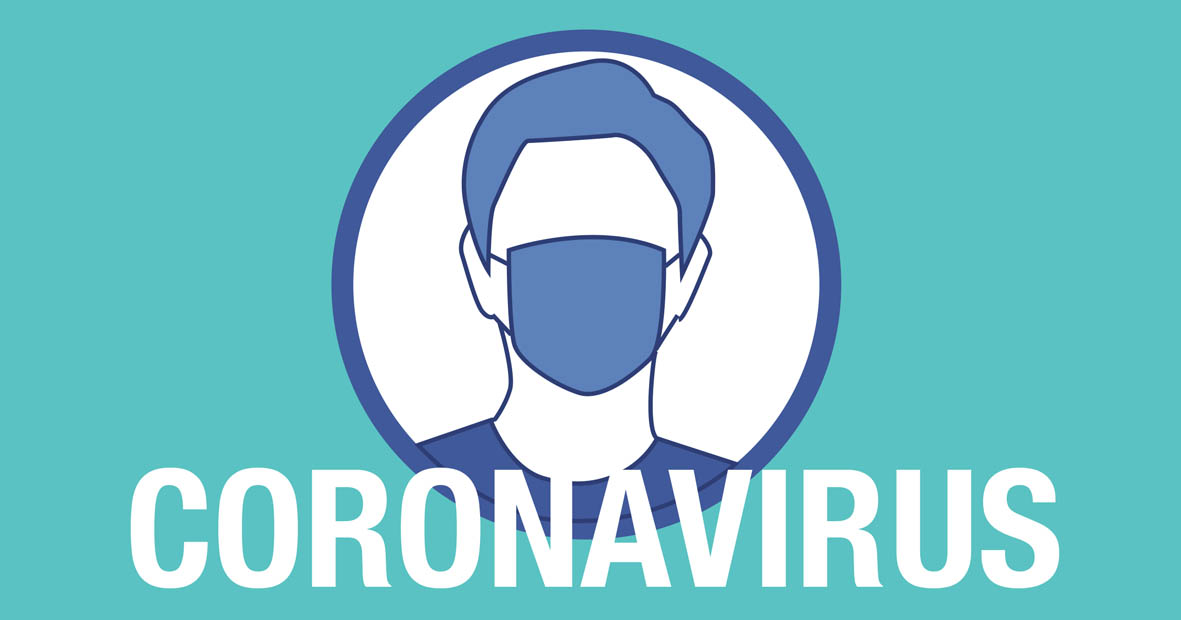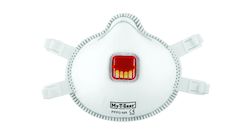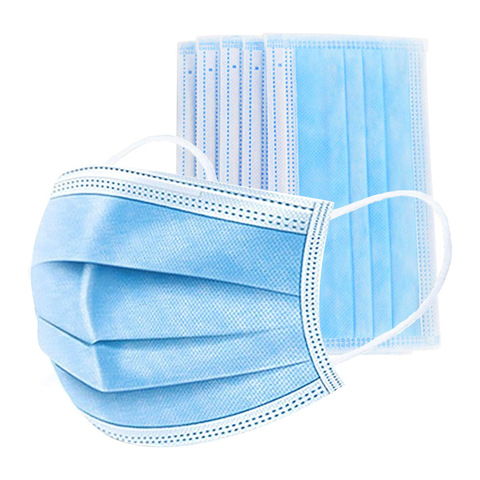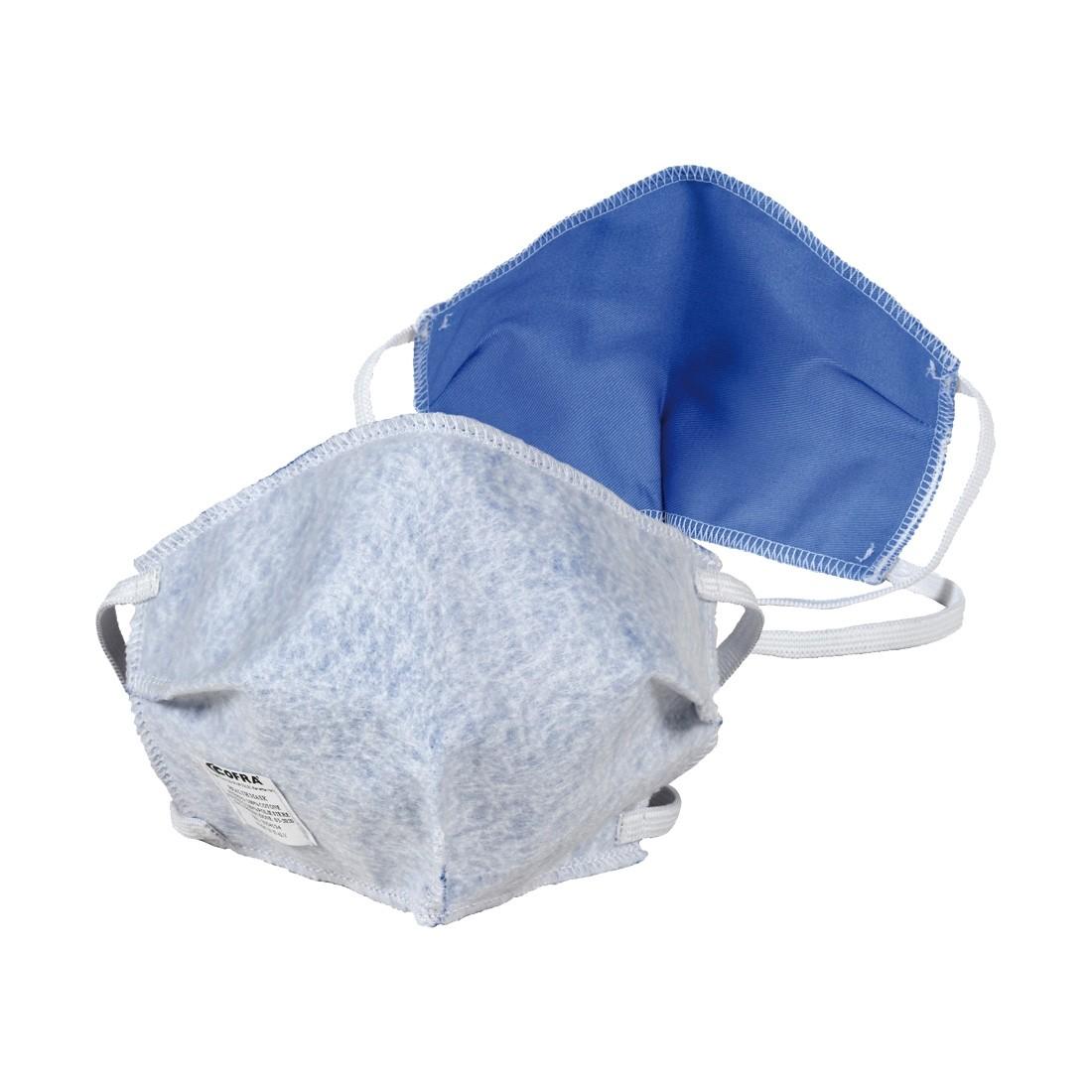Working safely using face masks
Only a few months old and only 50 to 200 nanometres in size, but nevertheless the whole world is in its grip: COVID-19. The arrival of the new coronavirus has turned society as we know it completely upside down, both privately and in the workplace.

Since the transfer of COVID-19 takes place via human fluid, it is important to keep sufficient distance and maintain good hand hygiene. The use of face masks can also play a role in limiting the spread of viruses.
Also -or rather, precisely – in these strange times, safety is a top priority at Intersafe. We are therefore happy to help you select the right masks. In this way we hope to ensure that personal protective equipment (PPE) with a higher level of protection are only used in situations where this is really necessary. In this way, these PPE’s remain available to those who need them the most.
When do you choose which protection?
To determine what protection your employees need, you first determine what risks they are exposed to and to what extent. The risk level of a virus transmission depends on the viral load and the frequency and duration of exposure: an industrial worker who works 10 minutes away from his colleague at a distance of 80 centimetres is therefore less at risk of a COVID 19 infection than a healthcare worker who performs a bronchoscopy. In situations where full respiratory protection is not required, a mouth mask is a suitable alternative.
-
Face masks
A dust mask, also known as a respiratory protection mask, is a personal protective device and, thanks to its design, fits tightly to the face. The mask is available in three types: FFP1, FFP2 and FFP3. The higher the category, the better the mask protects against airborne particles. For work involving the release of large amounts of aerosols, RIVM recommends using at least an FFP2 mask.
FFP2 mask
This mask must comply with the European Personal Protective Equipment Directive and EN 149:2001+A1:2009.

-
Medical masks
The medical mask, also known as the surgical mask, is not a personal protective device and is available in two types: type I and type II. Whether a mask belongs to type I or type II is determined by the Bacterial Filtration Efficiency (BFE). The BFE indicates how effective the mask is in stopping infectious particles. Surgical masks fit slightly loosely on the face, because the edges of this type of face mask are not designed to fit completely tightly around the nose and mouth. These surgical masks are suitable for situations where it is not possible to maintain sufficient distance. In healthcare, such masks are used in wards with multiple corona patients together, where there is no direct patient contact and in the nursing or care of individual patients.
Medical mask
Medical masks type II shall comply with the Medical Devices Directive and standard EN 14683:2019.

The medical mask: type II or type IIR?
Type II medical masks are divided into two classes: type II and type IIR. The Splash Resistant Pressure, which indicates the degree to which the mask is resistant to splashes of potentially contaminated fluid, determines whether the mask belongs to type II or type IIR. A regular type II medical mask does not protect against splashes and will therefore not adequately protect the wearer in situations where there is a splash of blood or other body fluids. Masks of type IIR are splash resistant: the addition “R” stands for splash resistance.
In clinical applications where there is no risk of contact with blood or other body fluids, a Type II mask provides adequate protection. Occupational groups at risk of contact with body fluids, such as healthcare workers, will benefit from splash resistant chrirurgical masks.
-
Social masks
Social masks, reusable masks or health masks, whatever you call them, are basically pieces of fabric, for example cotton, to be worn in front of your mouth (and sometimes your nose) to protect the people around you from moisture that you could spread. In order to ensure that production and economic activity are regulated by the creation of these types of masks, which are not PPE, and to prevent false safety, governments in the countries around us have already set up regulations, where the Dutch government is still working on laying down guidelines with which these masks must comply. These social masks will be mandatory from June 1st to wear in the train, bus and metro in the Netherlands.
Social mask
Work is underway in the Netherlands to develop a technical specification of masks for use in public transport as required by the government as of 1 June 2020.

Do you still have questions based on this information or would you like to place an order?
Feel free to contact us via your account manager or fill in this contact form.
